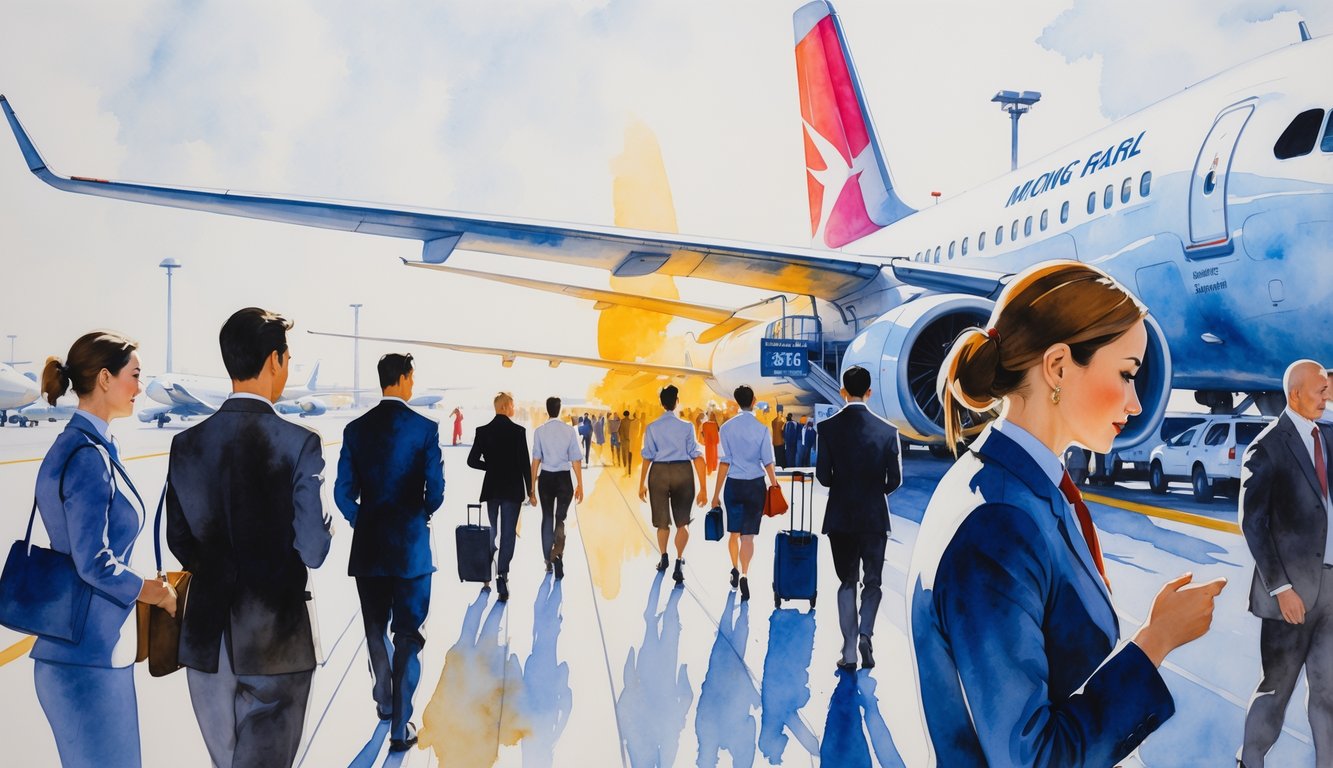
Training Requirements for Efficient Boarding
People assume flight attendants just pour ginger ale and smile. Ha. The training is brutal and missing a single step can turn the aisle into a war zone. Nobody takes photos of the real stuff—annual drills, surprise audits, and more “compliance modules” than I can count.
Regulatory and Certificate Holder Standards
Every year, I slog through FAA regs, service bulletins, in-person drills, digital quizzes—miss one, and I’m grounded faster than you can say “boarding complete.” FAA inspectors, supervisors, even cranky pilots demand training logs. I could shout evacuation commands in my sleep. And certificate holders (that’s airline-speak for the people with the paperwork, not some cool club) make us recertify after every rule change. You’d think all this prep would make things fast, but then someone’s grandma opens the overhead bin upside-down and, poof, training requirements out the window.
New hires freeze all the time—some rules, like minimum crew on board before boarding, aren’t up for debate. Even my shoes and blazer had to be signed off. If you see a crew member scrambling at the last second to meet regulatory and certificate holder standards, just know it’s a whole thing.
Flight Attendants’ Duties Beyond Boarding
Nobody ever talks about what happens after you yank your bag from the overhead and block the aisle like you’ve never seen daylight. No secrets—just a bunch of thankless steps we do to shave off precious seconds and make sure no one leaves a phone or, worse, gets stuck in their seatbelt.
Managing Deplaning and Passenger Egress
I’m always watching the clock and the crowd. If you’ve seen a flight attendant helping with bags at row 17 the second the door opens, there’s a reason. Every delay in deplaning is a dent in the airline’s “on-time” stats and, let’s be real, my next break.
I remind, nudge, and sometimes physically steer people who act shocked the flight’s over. There’s no secret exit. I grab scarves, duty-free, takeout, and, honestly, some things I’d rather not touch, just to clear the path. FAA operations guidelines say aisles and exits have to stay clear, and in training they hammer home that seconds matter—even if the only emergency is you missing your connection. No matter how many times I do the pre-landing speech, someone always jumps up too soon. I still try. Every single time.
Supporting Quick Turnarounds
It never actually ends when the last passenger leaves, does it? I’m already clocking the cleaners barreling in with those squeaky carts, pilots poking at paperwork, me in the background—just another moving part in this endless, slightly chaotic airport machine. My job? Reset the whole cabin. Every single seat, every safety card (where do those go?), relock bins, tick off compliance stuff—sometimes I wish I could just throw on headphones and ignore it all.
If I screw up, like miss a seatbelt or forget to latch the galley, some inspector could literally ground the plane. Then I get dragged into a “chat” nobody wants. Airlines brag about their turnaround times (sure, 30 minutes on a good day, in theory), but let’s be real: tired crews move slower, and nobody up front will admit it. We’re not just snack wranglers—we’re safety people, cleaners, therapists, whatever. Time pressure isn’t just a buzzword; one missed item and suddenly my whole night’s shot.
Emergency Procedures Linked to Boarding Zones
So, boarding. Sometimes I’m wedged in my row, barely enough space to breathe, still half-listening to the exit spiel and thinking: seriously, how is anyone escaping if there’s already a logjam of people and bags everywhere? The way airlines split boarding zones doesn’t just mess with overhead bins—it actually screws up evacuation, but you’d never know from the safety card.
Evacuation Management
Picture it: everyone crammed in, especially Zones 3 and 4, right after the “special” people get their giant roller bags stashed. In training, we practice for emergencies where passengers are basically a panicked blob, slow and confused. I remember an instructor just shaking her head, saying, “If there’s a crowd at the exits, evacuation slows down, period.” FAA data’s out there—evacuations can drag by 30% if aisles are blocked, usually because bins are full or people just freeze. Everyone likes to pretend their seat’s a “zone of safety,” but those back-to-front boarding plans? They don’t always help when you’re scrambling to get out.
My friend who ran the main boarding door once said, “If you get the boarding zones wrong, you end up with aisle folks stuck early and window people climbing over everyone in a panic. It’s a nightmare in drills.” Airlines keep fiddling with the order, hoping to dodge chaos, but it’s always a gamble. If you’re curious (or just bored), Frontier’s boarding FAQ breaks down their group system, but it’s not like it magically clears a path during an emergency.
Floor Level Exit Assignments
Now, floor-level exit stuff—gets weirdly technical, and honestly, most people don’t care unless they’re in those exit or bulkhead rows (and half the time, they swap seats anyway). The law says exits have to be accessible, and the FAA actually requires flight attendants to brief exit row people—specifics like age, language, physical ability, all that. You’ll see the crew checking tickets, making sure the right folks are in those seats, not just for show—it’s actual federal law.
Here’s what cracks me up: sometimes the guy in the exit row’s zoned out with headphones, or someone’s blocking the path with two suitcases. There’s no “exit row operator” certification; it’s just crew instructions and hoping people listen. Crew always say: floor exits only work if the assigned people get the briefing, stash their bags, and don’t swap at the last second. Cabin diagrams look neat, but if boarding zones fill the aisle seats and trap the window folks, good luck in a real emergency.



